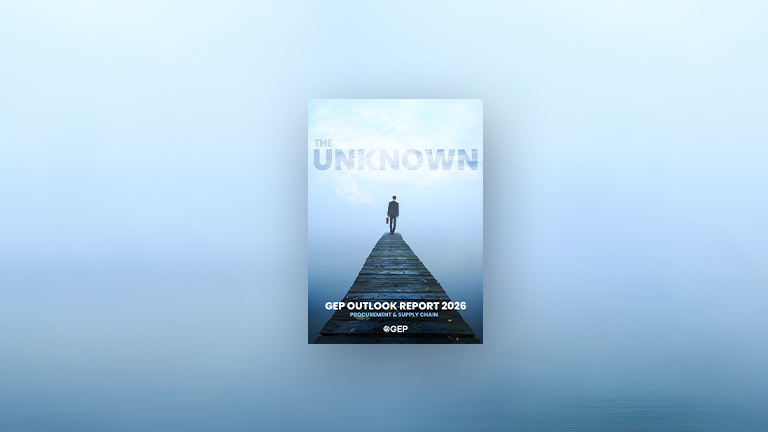
The Purchasing Process: An Essential Guide for Procurement Leaders
- A clear purchasing process reduces waste and strengthens supplier decisions.
- Good data helps procurement spot risks early and act fast.
- Contract discipline ensures suppliers meet business-critical commitments without exception.
September 24, 2025 | Procurement Strategy 4 minutes read
A purchasing process is often seen as an operational necessity — a way to manage approvals, issue orders, and control payments.
But in reality, it is one of the most powerful tools procurement has to influence business outcomes.
The way this process is designed and executed determines how well an organization manages supply risk, builds leverage with suppliers and turns purchasing decisions into sources of long-term advantage.
Talk to our Expert
How the Purchasing Process Shapes Outcomes
An effective purchasing process begins well before a supplier is selected. It starts with clarity of need.
When internal stakeholders and procurement align on what is required, and why, they reduce the risk of sourcing the wrong solution. This stage shapes not only what is bought but how well the purchase supports business priorities.
The formal request for purchase is more than paperwork. It’s a chance to validate that the need aligns with budget and strategy.
Approval gates, when designed well, provide both governance and an opportunity for procurement to add value —by challenging assumptions, suggesting alternatives, or consolidating demand.
The stages that follow (supplier proposals, quotations, contract negotiation) are where procurement’s role in shaping business value becomes most visible.
Strong purchasing processes turn these steps into more than price checks. They define how risk is shared, how performance will be measured and how obligations around ESG, data security, and innovation are embedded.
In mature purchasing processes, vendor performance is tracked continuously. Procurement uses data — on delivery reliability, service levels, compliance — to refine decisions and strengthen partnerships over time.
The mechanics of purchasing, such as three-way matching of orders, receipts, and invoices, are safeguards against error. But they also signal a disciplined process that earns the trust of finance, audit, and leadership.
Reporting closes the loop. Effective purchasing processes generate spend records as well provide insight into how buying decisions affect cost, risk and supplier performance. This is what turns procurement from a cost controller into a source of strategic guidance.
101 AI Use Cases in Procurement
Find proven and emerging AI applications across the S2P cycle
Different Purchasing Paths for Different Needs
Not every purchase follows the same path. Direct purchasing — for goods or materials that go into the company’s products — requires rigor. It often involves long-term supplier relationships and high service-level expectations.
Indirect purchasing supports the internal operations of the business — from IT services to facilities. While individual transactions may be smaller, cumulative spend is significant, and process discipline here offers substantial savings opportunities.
Strategic sourcing applies where long-term supplier value matters more than a single transaction. It’s how procurement supports innovation, risk sharing, and sustainability commitments.
Spot buying, by contrast, addresses immediate needs that don’t allow for formal sourcing processes. It should be the exception, not the norm, as overuse often signals weaknesses elsewhere in the purchasing process.
In all cases, contract terms anchor performance. Today, leading companies embed requirements around ESG, cybersecurity, and supply chain risk into even standard contracts, recognizing that these are no longer optional considerations.
What Sets Leading Purchasing Processes Apart
Best-in-class purchasing processes are not defined by complexity or bureaucracy. These processes have clarity, consistency and the ability to support better decisions.
Supplier management, for example, is not just a set of scorecards. It is an ongoing dialogue grounded in data and focused on improvement. Cost discipline comes not from chasing the lowest price, but from managing demand intelligently, consolidating volumes, and ensuring that contracts deliver total cost advantages over time.
Quality and compliance are not left to chance. They are built into processes through pre-approved supplier lists, standard contracts, and automated controls that flag exceptions before they escalate.
Technology plays a vital role in this. Automation removes manual work and accelerates approvals. Integrated systems provide the visibility needed to link spend decisions to business outcomes.
But technology alone does not create a good process. What matters is how procurement designs that process — balancing efficiency with oversight, and control with flexibility.
Building a Process That Lasts
Procurement teams that want to strengthen their purchasing process need to focus on several foundations. Data quality and integration are essential. Without reliable, consolidated data, insight and improvement are impossible.
Clear policies and well-defined workflows ensure consistency while allowing for appropriate flexibility when circumstances demand it.
The tools that support purchasing should not just automate transactions. They should enable better decisions by making data visible and processes transparent. Usability matters as much as functionality. Systems that teams resist will never deliver their potential.
Finally, the purchasing process must be dynamic. What works today may not fit tomorrow’s risks or opportunities. Regular reviews of spend patterns, supplier performance, and process effectiveness help procurement stay aligned with business needs in a changing world.
The Purchasing Process as a Source of Advantage
A well-designed purchasing process is not simply about controlling spend. It is how procurement helps the organization navigate complexity, protect value and build supplier relationships that deliver more than the sum of their parts.
In a world where supply chains face continuous challenge, the purchasing process has become one of procurement’s most important contributions to enterprise success.
Independent studies show that organizations that invest in structured, data-driven purchasing processes consistently outperform peers on cost savings, supplier performance, and risk mitigation.
But the true reward goes beyond metrics. It is the confidence that procurement decisions are supporting the long-term health and competitiveness of the business.



